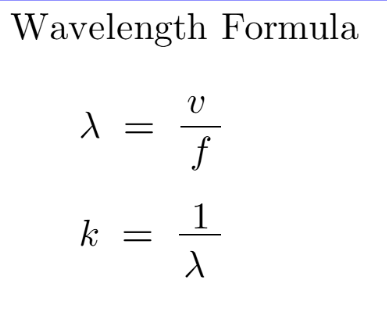Sound Wavelength and Wavenumber Calculator
The Nature of Sound Waves
Waves are everywhere and manifest in different ways. Waves occur when there's a disturbance in a system, and that disturbance travels from one place to another.
Types of Waves
There are two main kinds of waves:
- Mechanical waves: Need a medium to travel (e.g., sound, water waves).
- Electromagnetic waves: Can travel through a vacuum (e.g., light, radio waves).
Mechanical Waves Classification
Mechanical waves are classified into three groups based on the direction of particle motion relative to wave movement:
- Longitudinal waves: Particles move back and forth in the same direction as the wave.
- Transverse waves: Particles move back and forth at right angles to the wave motion.
- Combined waves: A combination of longitudinal and transverse waves (e.g., sea waves).
Sound Wave Components
Sound waves are represented as sine waves characterized by:
- Speed of sound: Speed at which the wave propagates.
- Wavelength (λ): Distance between corresponding points of the wave.
- Frequency (f): Number of wave repetitions per unit time (Hz).
Sound Wavelength Formula
The relationship between wavelength, speed, and frequency is given by:
λ = v / f
Where:
- λ = Wavelength
- v = Speed of sound
- f = Frequency
Frequency and Wavelength
Frequency determines pitch, while wavelength relates to the size of musical instruments. High-frequency sounds have short wavelengths, and low-frequency sounds have long wavelengths.
Frequency Ranges
Human hearing ranges from 20 Hz to 20,000 Hz. Sounds outside this range include:
- Infrasound: Below 20 Hz (e.g., elephant communication, earthquakes).
- Ultrasound: Above 20,000 Hz (e.g., medical imaging, animal communication).
Speed of Sound
The speed of sound varies by medium and is influenced by factors like temperature and material density. Examples:
- Air (20 °C): 343 m/s
- Water (20 °C): 1481 m/s
- Aluminium: 6420 m/s
 Home
Home
 Back
Back
